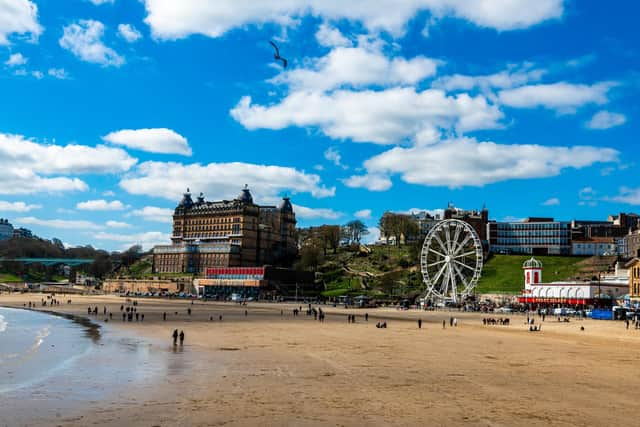This is how Yorkshire beaches are graded for water quality in 2023
The Department for Environment, Food and Rural Affairs (Defra) said 4.3 per cent of English bathing waters, including Scarborough South Bay and Bridlington South, had been given the lowest rating, the highest level since the four-tier system was adopted in 2015.
Four other beaches in Yorkshire, Runswick Bay, Scarborough North, Reighton and Skipsea, which previously were rated “excellent” have dropped to “good”.
Advertisement
Hide AdAdvertisement
Hide AdHowever beaches at Danes Dyke and Flamborough remain “excellent”, as are those at Hornsea, Cayton Bay and Withernsea.


The classificiations are based on results of testing by the Environment Agency between May and September for two types of bacteria, E.coli and intestinal enterococci, which can come from sewage, agricultural livestock, wildlife, birds and road drainage.
The news comes days after Yorkshire Water announced that it is spending £2.8m to cut the number of discharges from the Wheatcroft combined sewer overflow into the sea off Scarborough. The project will be paid for by YW; however it also announced earlier this month that customer bills will increase by almost £150 a year by 2030 as additional funding is needed to upgrade the sewage network and reduce discharges.
A YW spokesperson said: “We are disappointed to see some of the beaches on Yorkshire’s coastline have fallen, despite the prolonged efforts of the Bathing Water Partnership and our investments over many years to improve water quality along the coast.
Advertisement
Hide AdAdvertisement
Hide Ad“Bathing water classifications are complex, with multiple factors impacting water quality including storm overflows, agricultural runoff, industrial and highways inputs, and are created using an average of sample results collected over four years.
"The complexity has been highlighted this year by sample results from Bridlington South bathing water moving into the ‘excellent’ category, despite the wet summer, but the four-year average means the beach remains a ‘poor’ classification.”
The firm suggested the extremely wet summer, which had seen parts of Scarborough flood on numerous occasions, had caused an increase in discharges from overflows, more run off from agriculture and an increase in pollutants from watercourses. Environment Agency Chair Alan Lovell said overall bathing water quality had improved over the last decade but the “slight fall” in standards this year, showed they “must go further”.
Water Minister Robbie Moore said: “Our Plan for Water is delivering more investment, stronger regulation, and tougher enforcement to clean up our waterways and continue to improve our bathing waters.
Advertisement
Hide AdAdvertisement
Hide Ad“We have also set stringent targets for water companies to reduce sewage spills from storm overflows which frontloads action at designated bathing waters to make the biggest difference to these sites as quickly as possible.”
Comment Guidelines
National World encourages reader discussion on our stories. User feedback, insights and back-and-forth exchanges add a rich layer of context to reporting. Please review our Community Guidelines before commenting.
